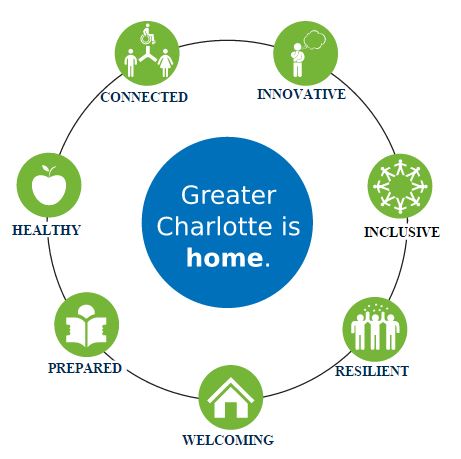Charlotte area leaders discuss transportation plans and funding

It was a full agenda for the February 18 Charlotte Regional Transportation Planning Organization (CRTPO) meeting! Here’s what your Metropolitan Planning Organization (MPO) members from Mecklenburg, Iredell, and Union County discussed:
I-485 South Lane Options
Louis Mitchell from NCDOT gave a report on the I-485 lane situation. A future managed lane project that will cover 16.6 miles from I-77 to US-74 is scheduled to begin in spring 2016. With completion of the widening project arriving 23 months ahead of schedule, there are three options for use of the newly completed lane: First, keep the lane for use as a shoulder. Second, open it as a High-Occupancy Vehicle (HOV) lane. Third, open it as a general purpose lane.
Under federal guidelines, a general purpose lane can not later be converted to a managed lane. This means that the second option preserves the ability to convert the HOV lane to a managed lane later, but the third option does not preserve that possibility.
Draft Project List for Surface Transportation Program and Bonus Allocation Funds
Bill Coxe from the Town of Huntersville presented the draft list of projects that was recommended by CRTPO’s Technical Coordinating Committee (TCC) to the MPO for consideration. This list, following approval by the MPO, will accompany the rest of the Draft State Transportation Improvement Program (STIP) list.
Bonus Allocation (BA) funds are given to regions that accept tolling projects. Unfortunately, BA funds cannot be used for stand-alone bicycle or pedestrian projects according to the STIP. However, the TCC is proposing use of BA funds to modify the Oaklawn Bridge to allow for a future greenway crossing to be built under I-77. The TCC approved several principles for use of BA funds. The first is to reward corridor proximity. This means that use of funds should be prioritized for projects that will improve mobility near the I-77 toll lane project (and within the corridors of other managed lane projects in the future). The second is to program maximum funding on division and regional tiers. The state requires more than half of BA funds to be used on statewide mobility projects, so the TCC wants to maximize the benefit to division and regional projects.
The Surface Transportation Program (STP) provides flexible funding that may be used by States and localities for projects to preserve and improve the conditions and performance on any Federal-aid highway, bridge and tunnel projects on any public road, pedestrian and bicycle infrastructure, and transit capital projects, including intercity bus terminals. These STP-DA funds can be used on bicycle and pedestrian projects, but we believe that the federal requirement of a 20% local match puts them on an un-level playing field relative to roadway projects.
A full list of recommended projects is available on p. 13-14 of the February MPO meeting agenda. We’re concerned about how few transit projects are on the list. The region also needs more investments in bicycle and pedestrian infrastructure to meet the mobility needs of the many residents who do not drive. However, we’re encouraged that 10% of the overall proposed BA and STP-DA funding is for transit, bike and pedestrian projects. Although we recommend that the MPO increase that percentage, it is much higher than the less than 1% for non-highway modes in the draft STIP that came back from NCDOT.
MPO delegate and Charlotte City Councilmember Vi Lyles asked the MPO to consider requiring jurisdictions to commit to projects before the list is finalized. The reason for this is that funds must be obligated to projects within five years, or the funds may be lost. Although five years may sound like a long time, it can take years to complete the evaluation, planning, and permitting process of making a project “shovel ready”.
Mecklenburg Livable Communities Plan

Heidi Pruess of Mecklenburg County presented the county-wide plan and explained how the MPO plays a critical role in making Mecklenburg County more “Connected”, one of the seven guiding principles of the plan. For more information about the plan, visit LivableMeck.com and see our blog post about the February 11 Charlotte City Council Environment Committee meeting.
Come to a meeting!
CRTPO meetings are open to the public and are usually held on the evening of the third Wednesday of each month. The times and dates occasionally vary, so be sure to check the schedule and agenda. We know that it may be difficult for you attend, so we’ll provide you with updates about the transportation planning and funding decisions being made at these meetings.
Thanks for reading!
As a nonprofit, community support is essential for us to keep doing what we do — including providing free articles like this. If you found this article helpful, please consider supporting Sustain Charlotte.
Want to stay in the loop? Subscribe to our weekly newsletter and follow us on Instagram, Facebook, and Twitter.
